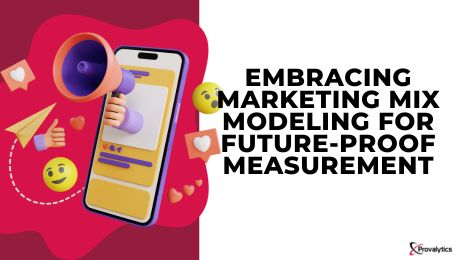Embracing Marketing Mix Modeling for Future-Proof Measurement
In the ever-evolving marketing landscape, staying abreast of innovations, shifts in consumer behavior, and regulatory changes is crucial for marketers. A significant transformation on the horizon is the move towards a cookie-free world and the growing impact of privacy regulations. This paradigm shift has reshaped the way we approach marketing measurement, prompting marketers to be more prepared than ever. Marketing Mix Modeling (MMM) emerges as a valuable approach for brands seeking to future-proof their measurement strategies.
While Marketing Mix Modeling is not a novel concept, dating back to the 1960s, it temporarily took a backseat with the rise of programmatic advertising and cookie-based user tracking. Despite the rich datasets provided by user tracking, challenges in establishing appropriate attribution rules have led to a reliance on inaccurate last-click approaches for impact evaluation. As third-party cookies become obsolete and modeling techniques advance, advertisers are revisiting MMM as a means to disaggregate performance from user-level tracking.
🚀 Yes, I Want The 2024 Playbook!

Advantages and Limitations of Marketing Mix Modeling
So, what exactly is MMM? It involves statistical analysis using regression techniques to assess the impact of independent variables like marketing activity and seasonality on the dependent variable, sales. MMM offers three significant advantages: cross-channel measurement, budget planning and forecasting tools, and a future-proof measurement source. However, it also comes with drawbacks, including less granular insights and slower delivery.
The cornerstone of successful MMM implementation lies in clean data inputs. Historical data must be meticulously gathered, and campaign taxonomies translated to the appropriate dimensions. Following the receipt of final historical data, the modeling team employs sophisticated programs incorporating advanced techniques to determine the lasting impact of advertising, such as ad stocks. Once the final model is delivered, the analysis of marketing impact commences.
If the model indicates that a channel is outperforming its share of media spend, the spend is typically increased to capture more value. Conversely, underperforming channels see reduced spending. Any changes in investment should be gradual, as results from other measurement methods may differ. Experimentation is advised in such cases to validate MMM learnings.
Using Multiple Measurement Methodologies for Future-Proof Marketing Strategies
MMM differs from other measurement types, like platform attribution or lift testing. Platform insights metrics provide real-time reporting, enabling media buyers to optimize campaigns based on recent performance. Incrementality or lift testing is ideal for ensuring that the conversions seen in real-time reporting sources truly reflect marketing efforts.
Recognizing the distinct value provided by various measurement methodologies, many brands employ a combination of them. Establishing a feedback loop between these tools ensures that the organization is aligned on how the results will be implemented, fostering long-term success in the evolving digital marketing ecosystem.
Marketing Mix Modeling stands out as a future-proof approach to marketing measurement, addressing critical questions about the impact of marketing activity. By providing cross-channel measurement, budget planning and forecasting tools, and leveraging regression techniques, MMM can be a cornerstone in a brand’s measurement strategy. Despite its limitations, MMM can complement other measurement tools, creating a feedback loop that equips marketers to adapt and thrive in the ever-changing world of marketing.
What is the significance of staying updated on innovations, consumer behavior shifts, and regulatory changes in the marketing landscape?
Staying abreast of these factors is crucial for marketers as the marketing industry is ever-evolving. It ensures that marketers are prepared for paradigm shifts, such as the move towards a cookie-free world and the growing impact of privacy regulations.
Why did Marketing Mix Modeling take a backseat with the rise of programmatic advertising and cookie-based user tracking?
Despite the rich datasets provided by user tracking, challenges in establishing appropriate attribution rules led to a reliance on inaccurate last-click approaches for impact evaluation. However, with the obsolescence of third-party cookies and advancements in modeling techniques, advertisers are revisiting MMM.
How does MMM differ from other measurement types like platform attribution or lift testing?
MMM involves statistical analysis using regression techniques to assess the impact of independent variables on sales. It provides cross-channel measurement and future-proofing, but with drawbacks like less granular insights. In contrast, platform attribution offers real-time reporting for optimizing campaigns, and lift testing ensures conversions reflect marketing efforts.

